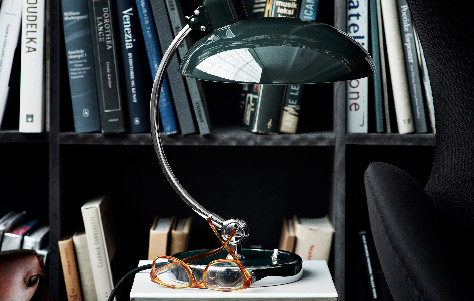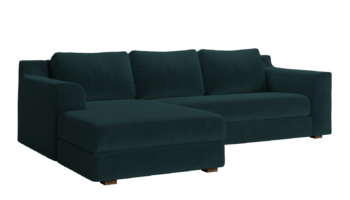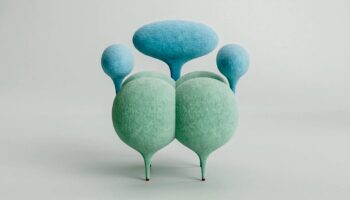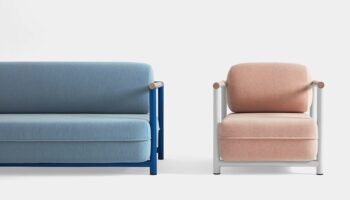Joe’s Best of 2011: Basic Forms
Anyone lucky enough to have seen the Bauhaus exhibit at MOMA, Bauhaus 1919–1933: Workshops for Modernity, knows that the artistic movement believed in presenting art, architecture, design, and crafts as a total work of art. Bauhaus argued against ornamentation and for function. Some of the most iconic pieces of twentieth-century furniture emerged directly or indirectly out of the Bauhaus style. These design objects work well even in today’s millennial times, since their emphasis on form is timeless. Consequently, design companies periodically reissue Bauhaus favorites.
Basic Forms: Joe’s Best of 2011.
Form and Function in Furniture: Icons of Yesterday and Tomorrow
In 2011, the Republic of Fritz Hansen came out with the Kaiser Idell Collection. The Kaiser Idell Table Lamp is like a moon balanced on an arc: the steel and brass, high-gloss head emerges from its curved stem, which sprouts from its round base. The lamp is a celebration of the circle—one of the three simple shapes studied in the forms class at the Bauhaus school.

Kaiser Idell Table Lamp. Designed by Christian Idell. Manufactured by The Republic of Fritz Hansen.
Another noteworthy reissue from the past year is the CH 110 Desk by Hans Wegner, now manufactured by Carl Hansen & Son. A large expanse of wood balanced on slim shiny legs, the CH 100 Desk emphasizes functionality. It sends a clear message that the workplace should save space and minimize clutter. Its one flourish, a stainless steel lockplate, cannot be said to be superfluous, since it serves a specific purpose.

CH 110 Desk. Designed by Hans Wegner. Manufactured by Carl Hansen & Son.
While it’s not a reissue of a classic, the Goetz Sofa could easily be confused for one. Herman Miller asked Mark Goetz “to create an innovative piece that would complement the work of great designers.” The result is simple and complex due to its inverted design premise—instead of a sofa made with a wooden frame that’s covered in upholstery, Goetz Sofa uses a wooden shell. And this shell, in a wide range of wood veneers, shows off joinery techniques: the sofa has complex miters at each corner and only one seam in the entire shell.

Goetz Sofa. Designed by Mark Goetz. Manufactured by Herman Miller.
Functionality, of course, extends beyond the Bauhaus. Take the 699 Superleggera designed by Gio Ponti. A chair that balances delicate lines and strength, the 1957 Superleggera originally weighed only 3.75 pounds. The chair’s reissue by Cassina maintains this lightness but offers the piece with a dash of color: its upholstered seat is available in any of Cassina’s 450 colors. Against the chair’s unpainted ash finish, the seat creates an interesting juxtaposition.

699 Superleggera. Designed by Gio Ponti. Manufactured by Cassina.
While I admire the clean, spare qualities of all these pieces, I also like complexity if it’s done right—not for the sake of accumulation. The permanent Crystal Chandelier light installation by WHITEVoid, suspended six stories high in Moscow’s Tsvetnoy Market, manipulates LEDs inside a series of lightweight, plastic foil, crystal-shaped modules. The foil allows the lights to change to every color in the spectrum. The many elements of the Crystal Chandelier exist to ignite our imagination.

Crystal Chandelier. Designed by WHITEvoid.
As a counterargument to the Bauhaus’ rejection of ornamentation, I offer the Wood Floor Mosaic with Steel Stone by Italian manufacturer Parchettificio. Full of arabesques and coils, snaking lines and medallions, this parquet floor includes antique oak, olive and polished teak inlay, oiled steel inserts, and waxed stone. Anyone can get lost in the design’s sinuous meanderings: the floor is as mesmerizing as a hypnotist’s metronomic pocket watch.

Wood Floor Mosaic with Oiled Steel Inserts. Designed and manufactured by Parchettificio.




Leave a Reply